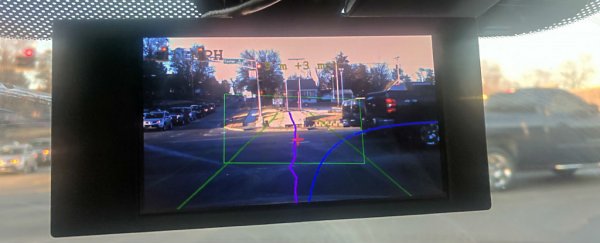Apparently you don't need to fork out for a brand new Tesla model if you want the benefits of a self-driving car, because a college student from the University of Nebraska, Omaha, has figured out how to transform his Honda Civic into a self-driving car for only $700.
Brevan Jorgenson used open source plans and software that he downloaded from the Internet to build a self-driving car kit that's capable of controlling his vehicle's brakes, steering, and accelerator, and can sense obstructions and other cars on the road around it.
Jorgenson used to be an early beta tester for Comma.ai - an ill-fated self-driving technology startup in San Francisco that became mired in controversy last year.
He says he took his self-driving Honda for its first test-drive back in January.
"It was dark on the interstate, and I tested it by myself because I figured if anything went wrong I didn't want anybody else in the car," he told Tom Simonite at MIT Technology Review.
"It worked phenomenally."
The software and plans Jorgenson used to make his self-driving kit are from Comma.ai, which put them online last year after failing to deliver on promises that it would sell self-driving car technology to consumers for less than $999 by the end of 2016.
The kit, called Comma One, was immediately disappointing, because it only ended up being compatible with just two car models upon release.
And then in October 2016, a request from the US National Highway Traffic Safety Administration (NHTSA) to provide specific safety protocols regarding how the technology would ensure the safety of regular drivers saw the whole thing abruptly cancelled, with this tweet from Comma.ai founder and notorious iPhone and PlayStation jailbreaker, George Hotz:
Would much rather spend my life building amazing tech than dealing with regulators and lawyers. It isn't worth it. -GH 2/3
— comma (@comma_ai) October 28, 2016
Comma.ai then made the technology open source, and put it online for anyone to download, along with plans for a hardware module to work with the technology. The now-freely available kit was rebranded as the Comma Neo.
"We're not shipping a product," Hotz told The Verge last year. "We're shipping alpha software really for research purposes only. We do not provide any guarantees."
Fortunately for Jorgenson, his Honda Civic happened to be one of the two compatible models - the other is the 2016 Acura ILX - so he went ahead and built a self-driving car kit using the Comma Neo plans and software.
After buying $700 worth of parts, he set about building the kit from scratch.
"A Neo is built from a OnePlus 3 smartphone equipped with Comma's now-free Openpilot software, a circuit board that connects the device to the car's electronics, and a 3-D-printed case," Simonite reports.
"Jorgenson got the case printed by an online service and soldered the board together himself."
After some brief teething problems that were fixed by patches from Comma.ai, the kit reportedly works like an early version of Tesla's AutoPilot mode, and is capable of taking control of the steering, brakes, and acceleration, while taking note of what's on the road around the vehicle.
"To have everything off the steering wheel and the brakes, it's really a … weird feeling, but you get used to it," Jorgenson told local news station WOWT 6 News.
But exactly how legal is it for someone to just go out and make their car a self-driving vehicle?
As law professor Bryant Walker Smith from the University of South Carolina told MIT Technology Review, while the US National Highway Traffic Safety Administration can enforce strict guidelines on companies that want to sell you a self-driving car, federal and state laws don't appear to affect consumers who want to upgrade their cars just yet.
Smith, who advises the US Department of Transportation on law and automation, says consumers have a lot of freedom right now when it comes to modifying their cars with self-driving technology - in the US, at least - but that doesn't mean insurance companies have to cover it if it gets you in trouble.
"Just because you can legally operate it doesn't mean you are not civilly liable," he told Simonite.
At a press conference last year, announcing the release of the Comma Neo plans online, Hotz said making everything open source meant that they no longer had to deal with NHTSA and the California DMV.
"NHTSA only regulates physical products that are sold," he said. "They do not regulate open source software, which is a whole lot more like speech."
We should point out that Jorgenson's self-driving car has not been independently tested, so we have to take his word on its capabilities for now.
But that's kind of the point of this whole thing - the plans are out there for anyone to use, and no one has to get permission to start putting their DIY self-driving tech to the test on public roads.
While Hotz tried to make clear last year that their technology is more like an "advanced driver assistance system", and "will not turn your car into an autonomous vehicle", there's no knowing how far individual drivers will try to take it.
So we just have to hope that anyone smart enough to get this thing to work won't do anything too crazy with it.
